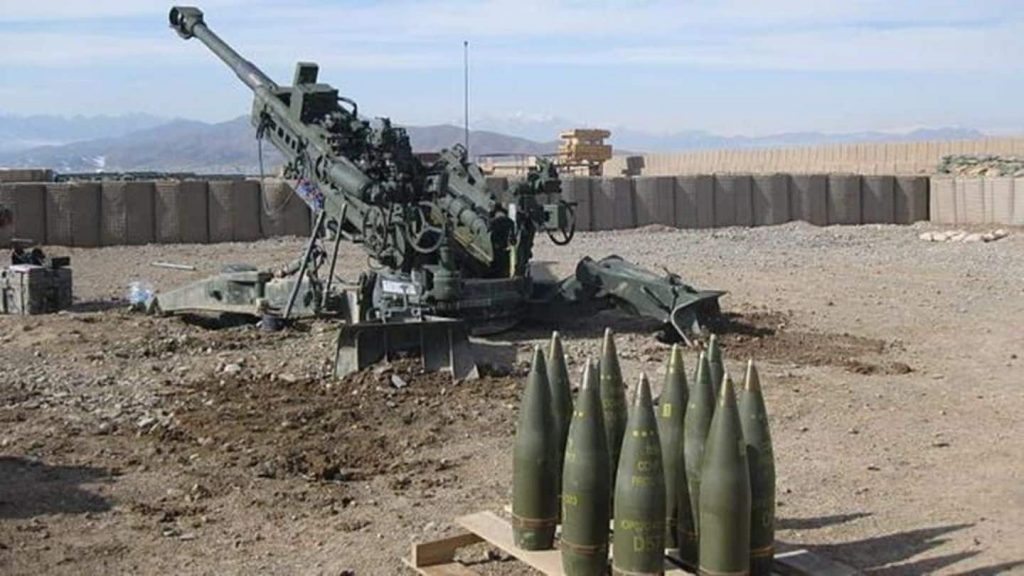The department of Defence, it would appear, is defenceless, and national security is seriously at stake. Reports that the Indian Army has sounded an alarm and expressed its anguish over the ‘poor and defective’ quality of ammunition supplied to it for tanks, artillery, air defence and other guns would have shocked many citizens. Soldiers are losing their confidence and are a ‘worried’ lot is what we are told. The supplier of these defective ammo is supposedly the state-owned Ordnance Factory Board (OFB). This could, on one hand, be seen in the context of the overall and progressive fall in standards in all areas linked to governmental functioning. On the other hand, the timing smells fishy since it is the government owned OFB which has become the target. Compare this with the Rafale deal where the Hindustan Aeronautics Ltd (HAL) was the target. By defaming state-owned units involved in defence production, there might be efforts, under cover, to replace them with private corporates.
The defence ministry that runs the three arms of the military is itself ailing for quite some time. It has been oft repeated that the UPA periods saw those like AK Antony at its apex, who was ‘indecisive’ and dragged decisions for long in matters of military ware acquisitions. He might have failed to rev up the confidence levels of soldiers. But is it to be believed that the Indian defence ministry runs on the diktats of any minister, especially one known for his indecisiveness. On the positive side, his period saw implementation of new salary scales for defence personnel which were to the satisfaction of all. This was followed by the NDA period. The defence ministry ran in a somewhat rudderless manner for the past five years, as ministers changed time and again. For a period, finance minister Arun Jaitley handled Defence, too, which itself was an unacceptable scenario. Defence ministry needed a full-fledged minister who can call the shots. Then came Manohar Parrikar from Goa, a greenhorn in Delhi, who himself admitted it took six months for him to understand the nuances of the ministry’s functioning. This was understandable. Health let him down, and there was the prolonged hospitalisation and his eventual return to Goa to repossess the CM post. After this, India got its first woman defence minister. Nirmala Sitharaman did a haphazard job as she was not known to have any penchant for serious work. This, in a season when India faced serious security threats from the western and northern borders.
Perceptions in the past were that the military brass, with their high levels of discipline, conducted themselves in not so admirable ways. Recent exposes showed these men involved in several military acquisitions from abroad took their cuts, to match with the greed of the political and bureaucratic bosses. Naturally, if things went wrong at the top, the lower rungs, too, might eventually have lost their integrity. Military acquisitions are of huge quantities, as the manpower involved is huge – some 3.5 million people in all. On one side, there are reports that Indian soldiers are struggling with old guns, while Pakistanis along the western border and LoC use sophisticated equipment to charge at Indian soldiers. So also with the Chinese. After the Bofors saga of the 1980s, there had hardly been any updating of guns and such other equipment. Iterations of governments blinked their way through the daily routines. It thus is understandable why there are larger casualties on the Indian side of LoC than on the Pakistani side, if any, in firings that take place almost on a regular basis in recent times.
Coming on top of all these are the reports about poor-quality supplies from the OFB. The unalloyed fact is that no governmental entity in India can do a job in a proper manner today. Long years of drag and experiments at the top level have left India in a state of shambles. It might appear that after the season of Indira Gandhi, there was hardly any leadership in evidence. The Narasimha Rao period helped India recover from an economic disaster. Rao and his finance minister – after the nation suffered the shock of pledging its gold with agencies abroad – introduced economic reforms and revived the growth process. But, how much grip Rao or Manmohan Singh as PM had on governance overall is a debatable point.
The scenario that India’s defence sector is facing has largely to do with lack of proper leadership at the top. When both Pakistan and China energetically engaged themselves in building their military muscle since the turn of the Century, India sat blinking. Until 2000, India and China were equals in military terms. Today, China has several times the strength of India, while Pakistan also shows the boldness to take on India, be it on ground or in the skies. India lives with its third-rate arms and ammunition. The question now could be whether privatising defence production will offer the solution or not. Most likely, it will not.
